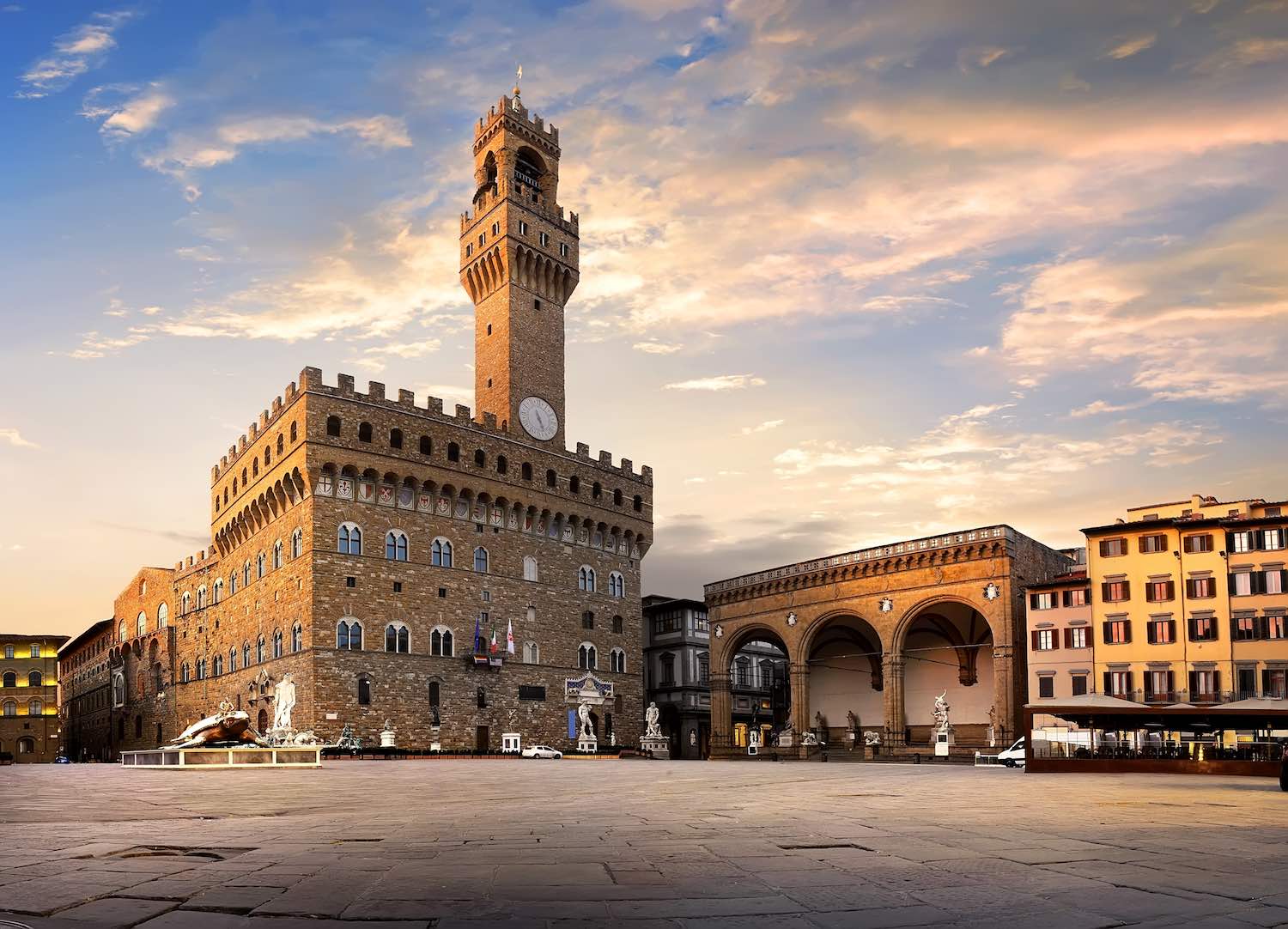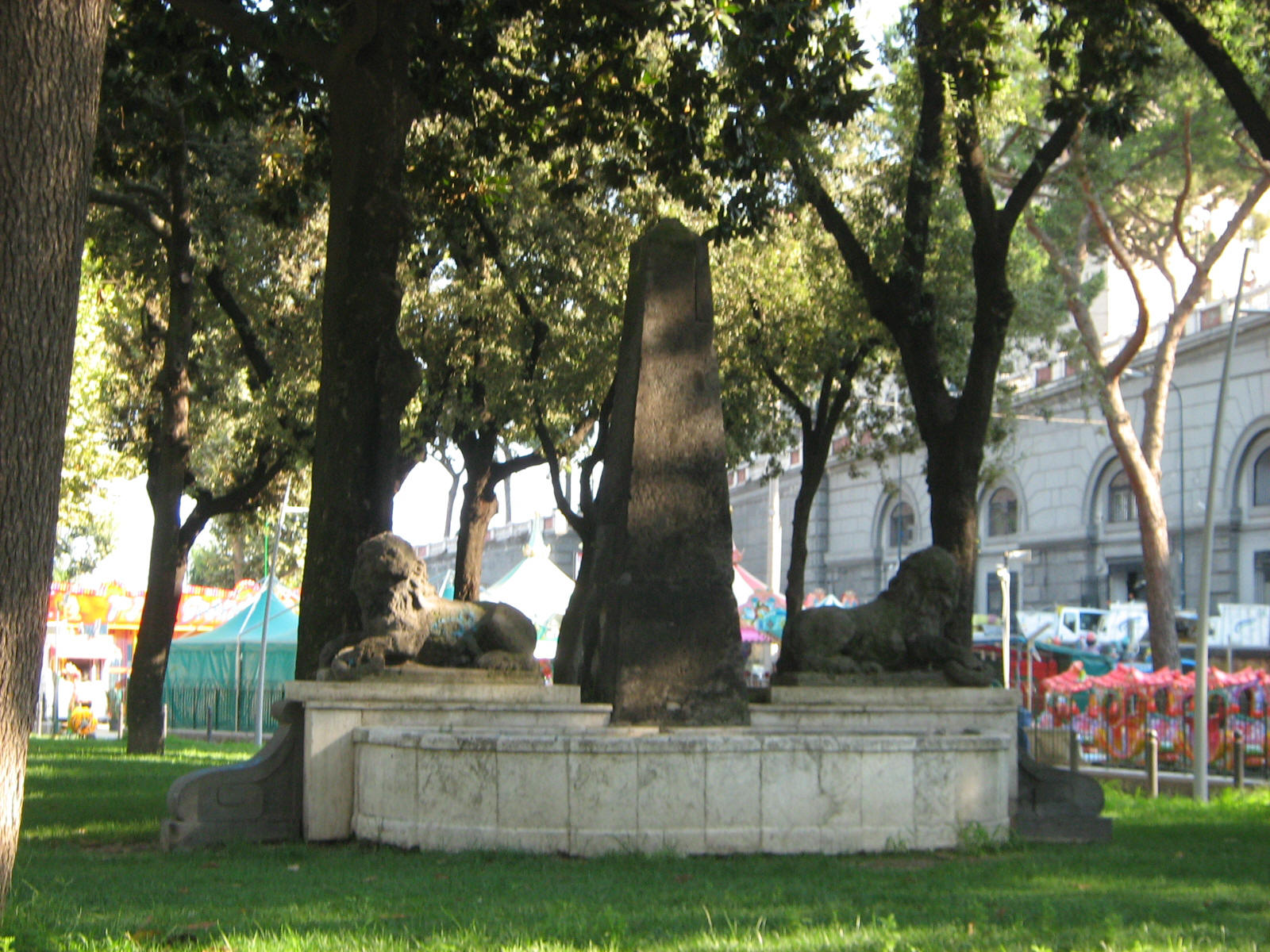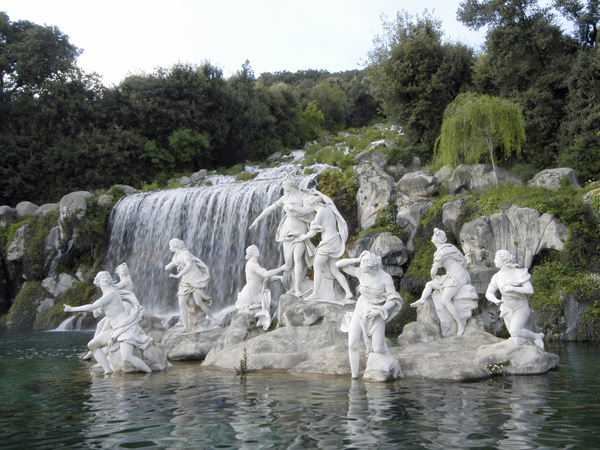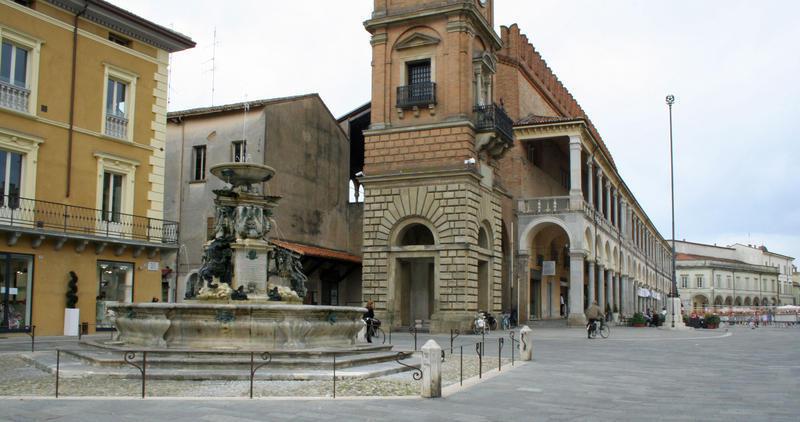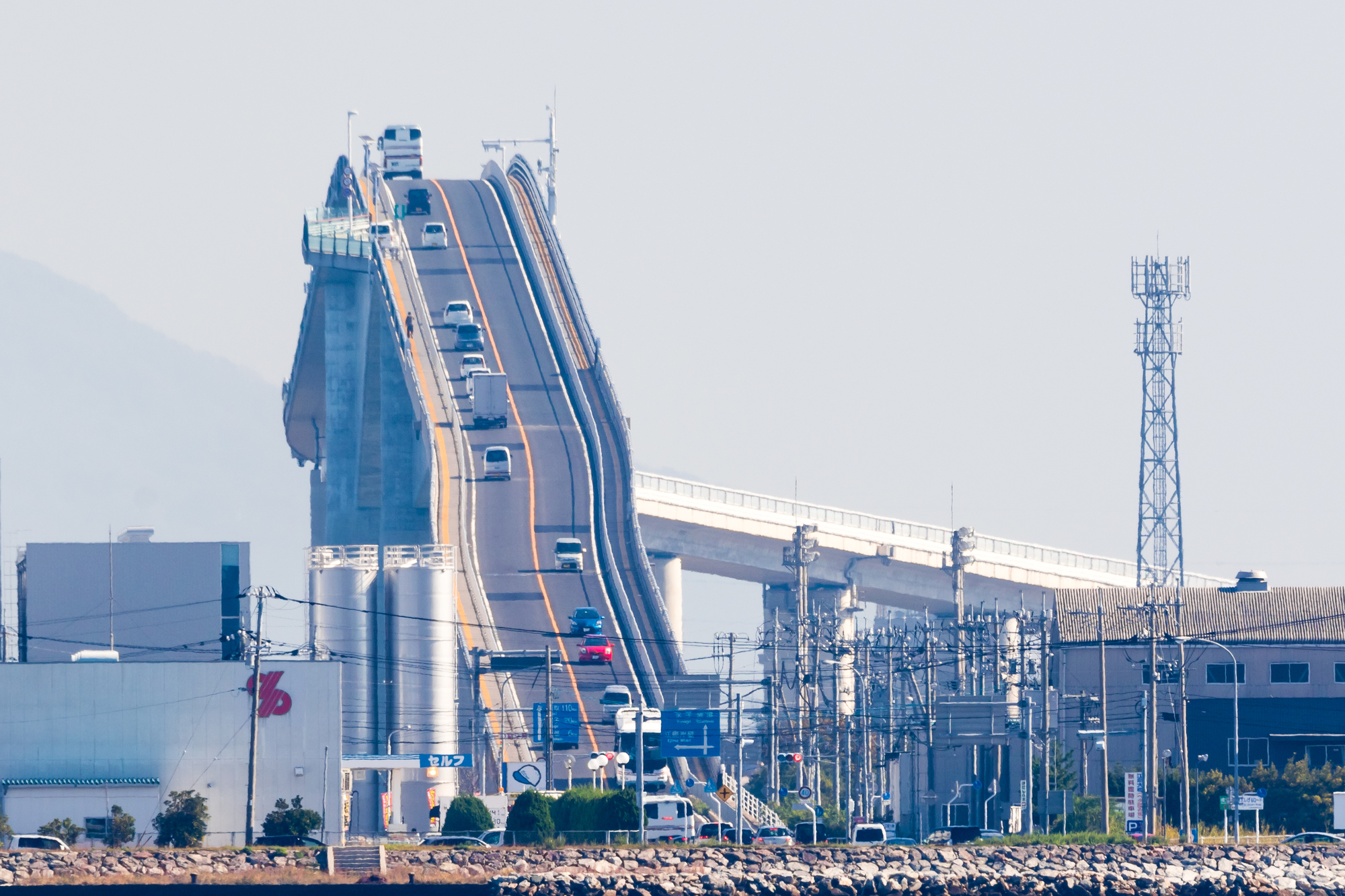<p>The centerpiece of Florence’s most famous square, <strong>Piazza della Signoria</strong>, is the 14th-century Palazzo Vecchio , the seat of the city’s civil and administrative power. Dominating the view are ancient sculptures in marble or sandstone, such as Donatello’s Marzocco, the mighty lion resting on the emblem with the fleur-de-lis of Florence; or the Fountain of Neptune, called goliardically by Florentines "Biancone," the city’s first public fountain. Moving toward the Uffizi Gallery, there is a shelter under the Loggia dei Lanzi.</p>
<p> </p>
<p>Built at the end of the 14th century to host indoor popular assemblies and ceremonies of the Florentine Republic, it has now become an open-air museum, showcasing a series of sculptures that are a must-see. Observe, for example, Perseus with the Head of Medusa, a work by Benvenuto Cellini commissioned by Cosimo I dè Medici, undoubtedly the most important masterpiece contained within the loggia. </p>
<p> </p>
<p>Also worth mentioning is the Rape of the Sabine Women, made in marble by Giambologna in 1583, or the Hercules and the centaur Nessus, also by Giambologna, made in 1599. Inside the loggia are also a series of sculptures from the Roman period, some of which are of uncertain provenance, while others are 19th-century reproductions, such as Pio Fedi’s Rape of Polyxena, dating from 1865. </p>
<p> </p>
<p>But visiting Piazza Signoria is not just about going to museums or admiring works of art: the square is the beating heart of Florence’s historic center, and it is also pleasant to experience it while sitting at one of the outdoor tables of the many bars and restaurants that overlook it. Certainly the prices will not be low, but it is worth spending a few extra euros for a coffee that will give you an unforgettable view of Florence. For example, try indulging in a treat at Bar Rivoire, which was opened in 1872 and is part of the Association of Historic Places of Italy.</p>
